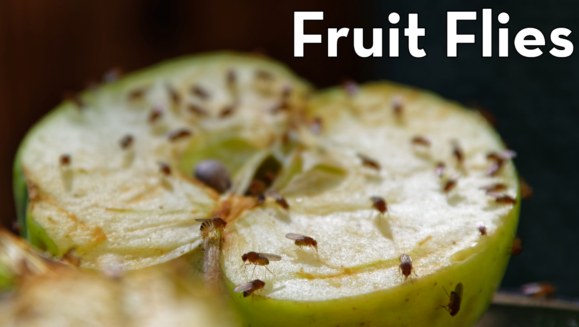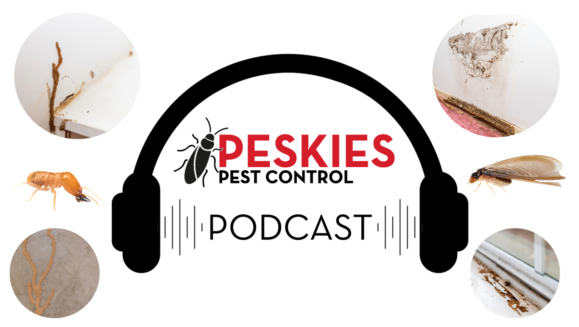Podcast: Play in new window | Download
Subscribe: RSS
Hello and welcome to another edition of the Peskies pest control podcast right here in Montgomery, Alabama with your host, Travis and Michael. We do this podcast as a community service for the river region. This includes Montgomery, Prattville, Millbrook, Wetumpka, Pike Road, Auburn and any other surrounding areas for people just like you.
Michael Wienecke
So today here on the pesky pest control podcast, we are going to be talking about my favorite subject, roaches, not just any Roach, the largest roach in Alabama, not in the world,
Travis McGowin
but before we now we dive off into the bug stuff, let’s acknowledge the obvious. It’s been a while.
Michael Wienecke
Yes, yes. I completely just forgot about that. Yeah, yes. Well,
Travis McGowin
it has been a while, yeah, but for those of you who do listen on a regular basis, we apologize, but it has been a while. Things have things have been wild around here. The bugs have been non stop, and so we had to take a little hiatus, and now we are back. Yes,
Michael Wienecke
it’s a lot harder to do everything you know than you’d think. So,
Travis McGowin
right? So anyway, American cockroaches, let’s talk about them. Yes.
Michael Wienecke
So American cockroaches are in your house. It’s becoming fall, and they are going to find their way in through holes in the wall, holes in the brick, pipes, vents, tree branches touching, you know, the side of the house to let those guys bypass any products or anything like that to get into the house.
Travis McGowin
I mean, I haven’t seen any in my house. You said they’re in my house. Well, you
Michael Wienecke
just said you had a smokey brown roach in your house that was
Travis McGowin
off record. We didn’t want to talk about that. That was off record. Much
Michael Wienecke
harder to control, much harder to control. Yes,
Travis McGowin
so, yeah, the American cockroaches. And I tell a lot of customers this, the American cockroaches like to live underneath pine straw, underneath mulch vegetation areas. So they’re very typical to see them around the outside of your house where you’ve got landscaping, and they like to eat under that dead and decay that layer of dead and decaying vegetation up underneath all of that landscaping material so they can make a nice little home for themselves. And typically, they don’t usually want to come inside and they don’t usually want to infest a person’s house. But there are exceptions in the fact that sometimes they mistakenly wander their way in,
Michael Wienecke
or they just weasel their way in because it’s a nice dry spot, and it’s been raining for five days straight,
Travis McGowin
right? And I also think, too, that sometimes with gaps, cracks and crevices around the house, whether it’s doors, windows, anything like that, that you end up, you know, at night, you got light coming through those gaps, cracks and crevices. I don’t think that helps your I don’t think that helps your calls either when trying to keep them out. No, 100%
Michael Wienecke
I can remember as a kid, I was watching TV one day with my window open, and an American cockroach flew right in and landed on the TV and scared me after death. Going straight
Travis McGowin
for the light makes you, makes you think about those commercials that they used to have where you’re sitting there watching it looks like a regular, normal commercial, and then this bug goes and crawls across the screen and always looks so real, like you want to throw something at the TV? No, I know. I wonder if they were ever liable for someone throwing it, throwing something at the TV and breaking a TV, and like, you know, had to pay for somebody a new TV. Oh, I
Michael Wienecke
almost broke my TV. So, yes, I can say that. But no, that that’s, that’s a great point. Turning off your lights at night. That’s going to stop any attraction to, really, any bug. I mean, spiders, because you’ve got your flying insects flying around that that that light. But roaches, you know, that’s our topic. So we’ll stay on topic. Roaches typically like to infest the lower portion of a house, like crawlspace, or, I’m not going to say infest. They like to gain entry to occupy, yes, I like to gain entry to crawl spaces, basements, like I said, the underside of houses, due to, you know, higher moisture content, much better. Survival, survivability, survivability, yeah.
Travis McGowin
So we know where they like to go. We know what they’re searching after. Let’s talk about a couple things that maybe you know you can do to prevent that. We’ve talked
Michael Wienecke
about it before. Try to keep your bushes, your branches, anything touching the the roof line or the side of your house, because you can put down product after. Product. If that Roach is crawling a tree, and that tree is hanging the the roof or touching a window, or it’s just going to be easy access for for that little guy or a little girl,
Travis McGowin
right? They can circumvent right over anything that you or that your pest control company, that your technician applies, that they just have a route to go around it or over it.
Michael Wienecke
Yeah, yeah. So, I mean, like, we’re talking about roaches right now, especially American roaches, because it’s fall, that’s when they start really getting into people’s homes again. You know, the pine straw around the house, just keeping everything nice and dry, trying to divert water away from your house, is going to stop them from feeding on that organic matter up under the pine straw and around the mulch,
Travis McGowin
right and some other common entry points that we can talk about sealing up, you know, HVAC entry points, where your HVAC lines go into the house a lot of times, there can be gaps right there. You can also seal up around vents. If you have a crawl space, you can seal up around those vents, you know, but you don’t want to block any airflow. You want to make sure that you have good ventilation and airflow inside the crawl space, too, gaps and cracks around plumbing. I know sometimes we see houses where there’s some master drains that are exiting the outside of the house that maybe aren’t buried underground, or have some other kind of plumbing or drainage pipes coming in and out of the structure somewhere or another. So sealing up any of those access points can keep you free from American cockroaches as well.

